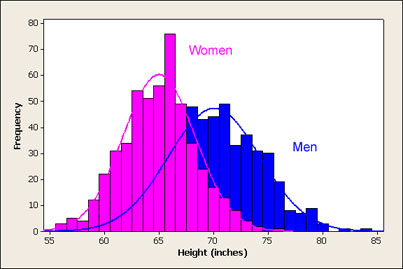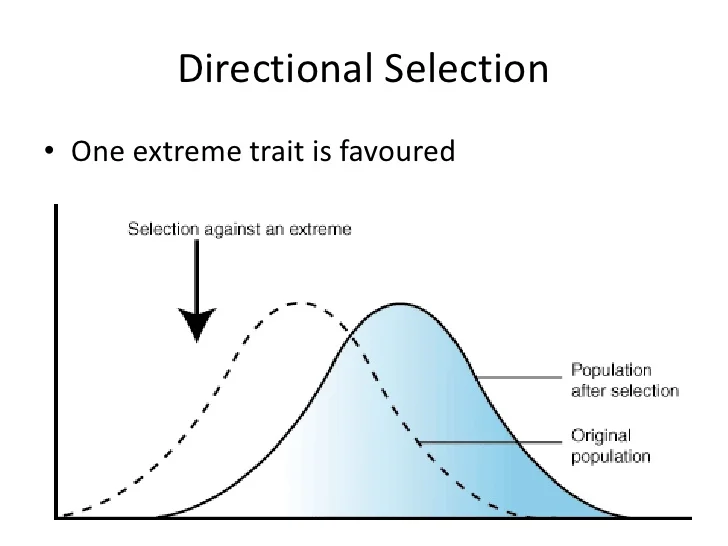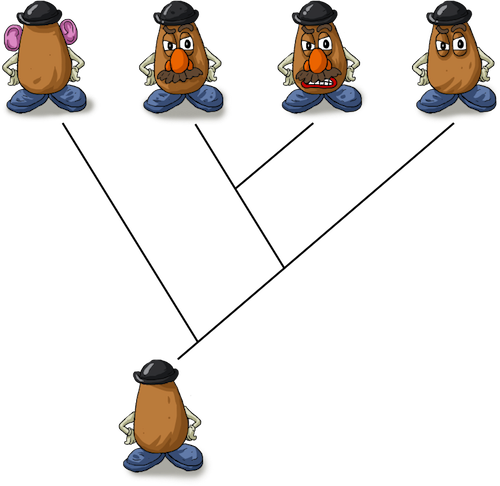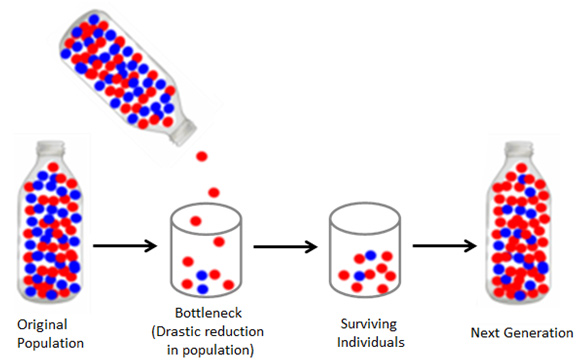The Evolution of Populations Chapter 11
Can a species survive with only 1 male and 1 female?
Endangered Animals
Genetic variation in a population increases the chances that some individuals will survive.
Gene Pool: all of the genes of the reproductively active members of a population
Allele Frequency: the proportion of gene copies in a population that are a given allele, expressed as a percentage.
Allele Frequency: the proportion of gene copies in a population that are a given allele, expressed as a percentage.
Normal Distribution: a distribution of numerical data whose graph forms a bell-shaped curve that is symmetrical about the mean
Normally when you look at the crowd you can separate people according to height and you put very short people in one side, average height in the middle, and you put very tall people in the other side. You quickly come to the conclusion that there are more average height people than the rest.
Microevolution: is the observable change in the allele frequencies of a population over time.
Normally when you look at the crowd you can separate people according to height and you put very short people in one side, average height in the middle, and you put very tall people in the other side. You quickly come to the conclusion that there are more average height people than the rest.
Microevolution: is the observable change in the allele frequencies of a population over time.
Directional Selection : a natural selection process in which one genetic variation is selected and that causes a change in the overall genetic composition of the population
Stabilizing Selection
When the average phenotype/genotype is favored in a population you also see a change in the overall population.
Disruptive Selection
When the extreme sides of the phenotype/genotype of a population are favored then change to a population is seen as follows....
Stabilizing Selection
When the average phenotype/genotype is favored in a population you also see a change in the overall population.
Disruptive Selection
When the extreme sides of the phenotype/genotype of a population are favored then change to a population is seen as follows....
Mechanisms of Evolution (how groups might evolve)
Speciation: When a new species are created as a result of evolution.
Genetic Drift: A change in the gene pool due to chance.
Genetic Flow: When genes from a new population are introduced to an existing population and mating occurs.
Bottleneck Effect: Genetic drift that occurs due to a drastic event that reduces a population.
Founder Effect: When a small group of individuals breaks away and starts a new popluation.
Reproductive Isolation: the inability of members of a population to successfully interbreed with members of another population of the same or a related species
Other times different barriers block these species from mating...
Behavioral Isolation: isolation between populations due to differences in courtship or mating behavior.
Geographic isolation: isolation due to physical barriers dividing two different populations.
Temporal isolation: isolation between population due to barriers related to time, such as difference in mating periods or difference in mating periods or difference in the time of day that individuals are most.
Speciation: When a new species are created as a result of evolution.
Genetic Drift: A change in the gene pool due to chance.
Genetic Flow: When genes from a new population are introduced to an existing population and mating occurs.
Founder Effect: When a small group of individuals breaks away and starts a new popluation.
Speciation: the formation of new species as a result of evolution.
Reproductive Isolation: the inability of members of a population to successfully interbreed with members of another population of the same or a related species
Other times different barriers block these species from mating...
Behavioral Isolation: isolation between populations due to differences in courtship or mating behavior.
Temporal isolation: isolation between population due to barriers related to time, such as difference in mating periods or difference in mating periods or difference in the time of day that individuals are most.
















No comments:
Post a Comment